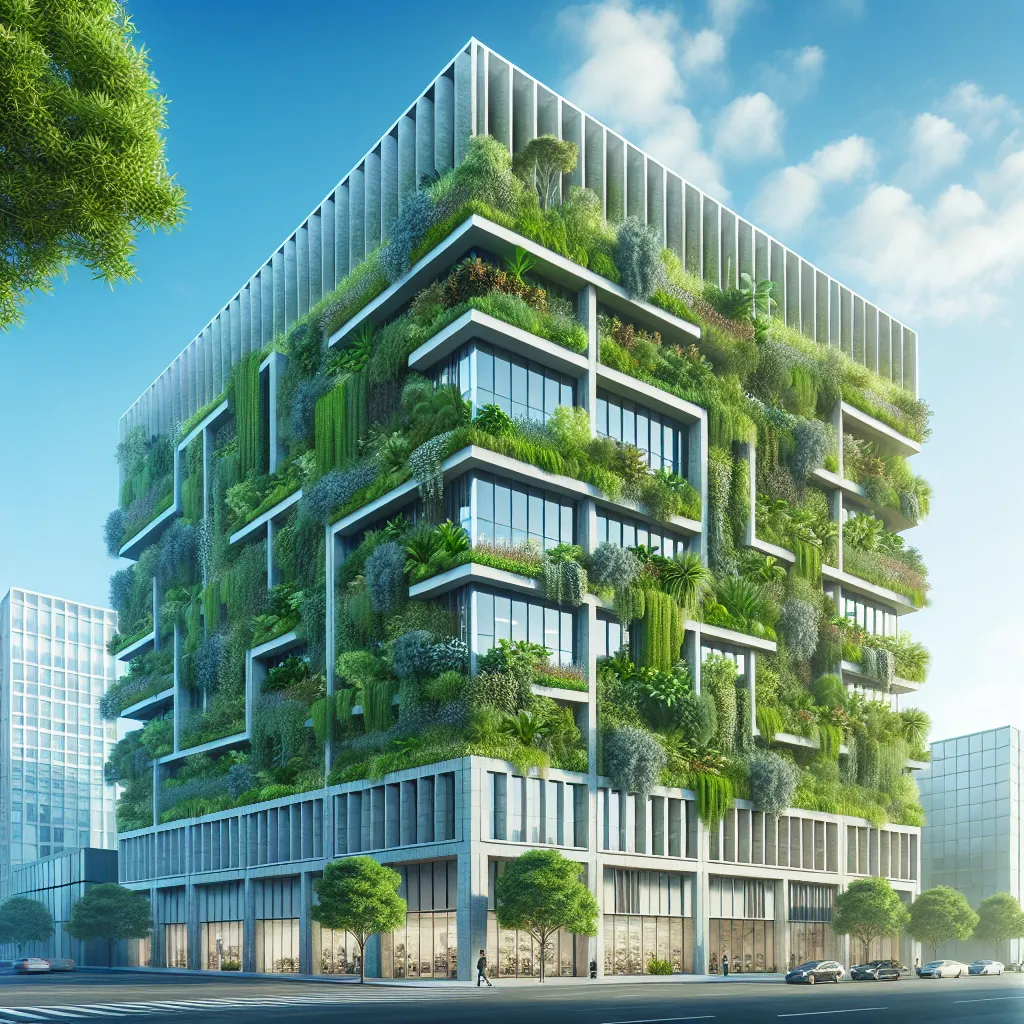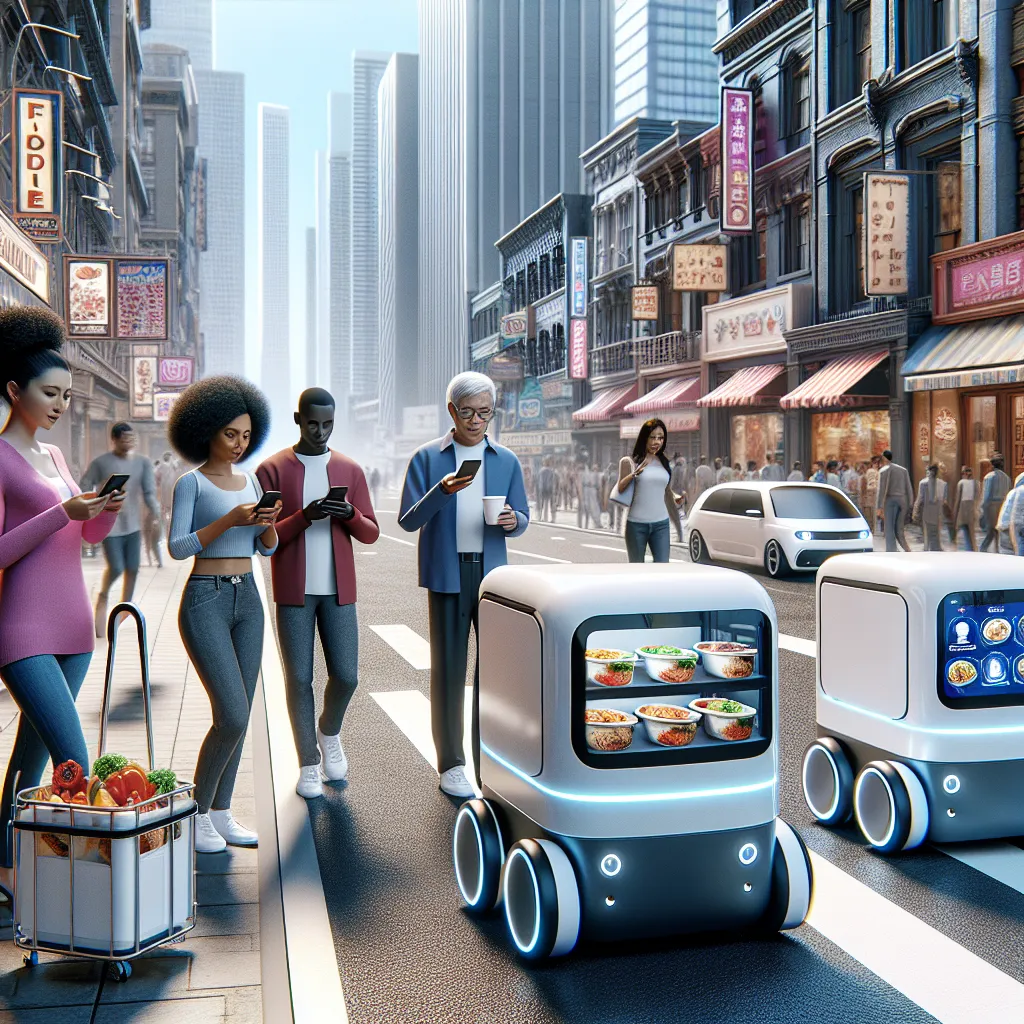Welcome to IELTS.NET, your trusted resource for IELTS preparation. Today, we’ll focus on a crucial topic in urban planning and sustainability: “The rise of green architecture in urban development.” This comprehensive IELTS Reading practice test will help you sharpen your skills while exploring an essential subject in modern city planning.
Introduction to the IELTS Reading Test
The IELTS Reading test assesses your ability to understand and interpret written English. It consists of three passages of increasing difficulty, followed by a series of questions. Today’s practice test focuses on the theme of green architecture in urban development, a topic that has gained significant attention in recent years due to growing environmental concerns and the need for sustainable urban planning.
IELTS Reading Practice Test: The Rise of Green Architecture in Urban Development
Passage 1 (Easy Text)
The Green Revolution in Urban Planning
Urban development has undergone a significant transformation in recent years, with a growing emphasis on sustainability and environmental consciousness. This shift has given rise to the concept of green architecture, a design philosophy that seeks to minimize the negative impact of buildings on the environment while maximizing their positive effects on human health and well-being.
Green architecture incorporates a range of innovative features and technologies aimed at reducing energy consumption, conserving water, and promoting biodiversity. These include solar panels, green roofs, rainwater harvesting systems, and energy-efficient insulation. By integrating these elements into building design, architects and urban planners are creating structures that not only reduce carbon emissions but also enhance the quality of life for city dwellers.
One of the most visible aspects of green architecture is the incorporation of vegetation into building design. Vertical gardens and living walls have become increasingly common in urban areas, transforming concrete jungles into lush, green spaces. These features not only improve air quality by absorbing pollutants and releasing oxygen but also help to regulate temperature and reduce the urban heat island effect.
 Green Building with Vertical Garden
Green Building with Vertical Garden
The rise of green architecture is not limited to new constructions. Many cities are also focusing on retrofitting existing buildings to improve their environmental performance. This approach, known as green retrofitting, involves upgrading older structures with energy-efficient systems, improved insulation, and sustainable materials. By breathing new life into existing buildings, cities can reduce waste and preserve their architectural heritage while still moving towards a more sustainable future.
As awareness of climate change and environmental issues continues to grow, the demand for green architecture is likely to increase. This trend is already influencing urban planning policies, with many cities implementing regulations that require new buildings to meet specific sustainability standards. As a result, the urban landscapes of the future are set to be greener, cleaner, and more resilient than ever before.
Questions 1-5
Do the following statements agree with the information given in the passage?
Write:
TRUE if the statement agrees with the information
FALSE if the statement contradicts the information
NOT GIVEN if there is no information on this
- Green architecture aims to reduce the negative environmental impact of buildings.
- Solar panels and green roofs are examples of features used in green architecture.
- Vertical gardens are mainly used for decorative purposes in urban areas.
- Green retrofitting is more expensive than constructing new green buildings.
- Many cities are implementing regulations for sustainable building standards.
Questions 6-10
Complete the sentences below.
Choose NO MORE THAN TWO WORDS from the passage for each answer.
-
Green architecture seeks to minimize negative environmental impacts while maximizing benefits to human __ and well-being.
-
__ __ systems are one of the water conservation features used in green buildings.
-
Vertical gardens help improve air quality by absorbing __ and releasing oxygen.
-
The process of upgrading older buildings with sustainable features is known as green __.
-
The integration of green architecture in urban planning is expected to make future cities more __ to environmental challenges.
Passage 2 (Medium Text)
The Economic and Social Impacts of Green Architecture
While the environmental benefits of green architecture are well-documented, its economic and social impacts are equally significant, albeit often overlooked. As cities worldwide grapple with the challenges of rapid urbanization and climate change, the adoption of green building practices is proving to be a catalyst for economic growth and social transformation.
From an economic perspective, green architecture offers a multitude of benefits. Initially, the higher costs associated with sustainable building materials and technologies led to skepticism about the financial viability of green construction. However, recent studies have demonstrated that green buildings can yield substantial long-term savings through reduced energy consumption and lower maintenance costs. The U.S. Green Building Council reports that LEED-certified buildings consume 25% less energy and 11% less water compared to conventional buildings, translating into significant operational cost savings over time.
Moreover, the green building sector has become a major driver of job creation and economic growth. The International Labour Organization estimates that the transition to a green economy could create 24 million new jobs globally by 2030, with a significant portion in the construction and renovation sectors. This growth is not limited to developed nations; emerging economies are also experiencing a surge in green construction, creating new opportunities for skilled workers and entrepreneurs.
The social impacts of green architecture are equally profound. Improved indoor air quality, better lighting, and the incorporation of natural elements in building design have been linked to enhanced occupant health and productivity. A study by Harvard T.H. Chan School of Public Health found that employees in green-certified buildings scored 26% higher on cognitive function tests and reported 30% fewer sick building symptoms compared to those in conventional buildings.
Green architecture is also playing a crucial role in addressing urban inequality. Many cities are incorporating affordable green housing initiatives into their urban development plans, ensuring that the benefits of sustainable living are not limited to high-end developments. For instance, the EcoBlock project in Oakland, California, aims to retrofit an entire city block with green technologies, providing low-income residents with access to clean energy, water conservation systems, and shared electric vehicles.
Furthermore, the integration of green spaces and community gardens in urban architecture is fostering social cohesion and improving quality of life in densely populated areas. These shared spaces provide opportunities for community interaction, recreation, and even local food production, contributing to the creation of more resilient and connected urban communities.
As green architecture continues to evolve, its impact extends beyond individual buildings to shape entire urban ecosystems. Concepts like biomimicry – the practice of emulating nature’s time-tested patterns and strategies – are inspiring innovative approaches to urban design. From buildings that purify air like trees to city layouts that mimic natural water filtration systems, these bio-inspired designs are helping to create more sustainable and livable urban environments.
The rise of green architecture represents a paradigm shift in how we conceive and construct our urban spaces. By aligning economic incentives with environmental and social benefits, it offers a holistic approach to addressing the complex challenges of 21st-century urban development. As this trend continues to gain momentum, it promises to reshape our cities into more sustainable, equitable, and vibrant places to live and work.
Questions 11-14
Choose the correct letter, A, B, C, or D.
-
According to the passage, the initial skepticism about green architecture was due to:
A) Lack of environmental benefits
B) Higher initial costs
C) Limited job creation potential
D) Resistance from urban planners -
The International Labour Organization predicts that the green economy will:
A) Replace 24 million existing jobs
B) Create 24 million new jobs by 2030
C) Reduce jobs in the construction sector
D) Only benefit developed nations -
Employees in green-certified buildings were found to:
A) Have 26% higher salaries
B) Work 30% longer hours
C) Score 26% higher on cognitive tests
D) Report 26% fewer sick days -
The EcoBlock project in Oakland aims to:
A) Build new high-end green developments
B) Retrofit an entire city block with green technologies
C) Create a new business district
D) Establish a car-free zone
Questions 15-19
Complete the summary below.
Choose NO MORE THAN TWO WORDS from the passage for each answer.
Green architecture offers significant economic benefits, including long-term savings through reduced (15) __ consumption and lower maintenance costs. The green building sector has become a major driver of (16) __ creation. Socially, green buildings improve occupant health and productivity through better indoor air quality and (17) __. Urban inequality is being addressed through (18) __ green housing initiatives. The integration of green spaces in urban architecture fosters (19) __ and improves quality of life in densely populated areas.
Question 20
Choose the correct letter, A, B, C or D.
- The concept of biomimicry in urban design involves:
A) Creating artificial ecosystems
B) Emulating nature’s patterns and strategies
C) Replacing natural systems with technological ones
D) Designing buildings that look like plants and animals
Passage 3 (Hard Text)
The Technological Frontiers of Green Architecture
The rapid evolution of green architecture is inextricably linked to advancements in technology. As urban populations continue to burgeon and the imperative for sustainable development intensifies, innovative technological solutions are reshaping the very fabric of our cities. This technological revolution in green architecture is not merely about incremental improvements; it represents a fundamental reimagining of how buildings and urban spaces can function in harmony with the natural environment.
One of the most promising frontiers in green architecture is the development of smart building systems. These integrated technologies leverage the Internet of Things (IoT) and artificial intelligence to optimize energy usage, enhance occupant comfort, and reduce operational costs. Advanced sensors and machine learning algorithms can predict and adjust to occupancy patterns, weather conditions, and time of day, ensuring that lighting, heating, and cooling systems operate at maximum efficiency. For instance, the Edge in Amsterdam, dubbed the world’s smartest building, utilizes over 28,000 sensors to manage everything from workspace allocation to personalized lighting and temperature settings.
The concept of net-zero energy buildings (NZEBs) is another technological milestone in green architecture. These structures are designed to produce as much energy as they consume over the course of a year, primarily through on-site renewable energy generation. Advances in solar panel efficiency, building-integrated photovoltaics (BIPV), and energy storage technologies are making NZEBs increasingly feasible. The Bullitt Center in Seattle, often referred to as the greenest commercial building in the world, achieves net-zero energy status through a combination of solar panels, geothermal wells, and a hyper-efficient building envelope.
Nanotechnology is emerging as a game-changer in the development of sustainable building materials. Nanoengineered materials can offer enhanced strength, durability, and thermal performance while reducing the overall environmental footprint of construction. For example, nano-modified concrete can sequester carbon dioxide during the curing process, potentially transforming a significant source of greenhouse gas emissions into a carbon sink. Similarly, nanocoatings can improve the energy efficiency of windows and facades, reducing heating and cooling demands.
The integration of biophilic design principles with advanced technologies is pushing the boundaries of what’s possible in green architecture. Biophilic design seeks to connect building occupants with nature, a concept that’s being amplified by technologies like electrochromic glass and dynamic facades. These systems can adapt to changing environmental conditions, optimizing natural light and views while minimizing glare and heat gain. The Al Bahr Towers in Abu Dhabi feature a responsive facade inspired by traditional Islamic screens, with thousands of shading devices that open and close in response to the sun’s movement, reducing solar gain by up to 50%.
Urban agriculture is another area where technology is revolutionizing green architecture. Vertical farming systems, hydroponics, and aeroponics are enabling food production within urban environments, reducing transportation costs and enhancing food security. Buildings like the Pasona Urban Farm in Tokyo integrate office spaces with agricultural production, using climate control and LED grow lights to cultivate crops year-round.
The advent of digital twins in urban planning and building management represents a significant leap forward in optimizing the performance of green buildings and entire city districts. These virtual replicas of physical assets can simulate various scenarios, predict maintenance needs, and optimize resource allocation in real-time. Singapore’s Virtual Singapore project is a prime example, creating a dynamic 3D city model that supports everything from urban planning to disaster response simulations.
As we look to the future, emerging technologies like graphene-based materials, artificial photosynthesis, and quantum dot solar cells promise to push the boundaries of green architecture even further. These innovations have the potential to create buildings that not only minimize environmental impact but actively contribute to ecosystem restoration and climate change mitigation.
However, the technological frontier of green architecture is not without its challenges. Issues of data privacy, cybersecurity, and the digital divide must be addressed to ensure that smart green buildings benefit all urban residents equitably. Moreover, the embodied energy and potential environmental impacts of producing and disposing of advanced technological components must be carefully considered in the broader context of sustainability.
In conclusion, the convergence of green architecture and cutting-edge technology is ushering in a new era of urban development. By harnessing the power of smart systems, advanced materials, and biophilic design principles, architects and urban planners are creating buildings and cities that are not only more sustainable but also more adaptive, resilient, and attuned to human needs. As these technologies continue to evolve and mature, they hold the promise of transforming our urban landscapes into living, breathing ecosystems that nurture both human communities and the natural world.
Questions 21-26
Complete the table below.
Choose NO MORE THAN THREE WORDS from the passage for each answer.
| Technology | Description | Example |
|---|---|---|
| Smart building systems | Use (21) __ and AI to optimize energy usage and comfort | The Edge in Amsterdam |
| (22) __ | Produce as much energy as they consume annually | Bullitt Center in Seattle |
| Nanotechnology | Enhances building materials, including (23) __ that can sequester carbon dioxide | Not given |
| Biophilic design | Connects occupants with nature, using technologies like (24) __ | Al Bahr Towers in Abu Dhabi |
| Urban agriculture | Enables food production in cities using systems like (25) __ | Pasona Urban Farm in Tokyo |
| (26) __ | Virtual replicas of physical assets for optimization and simulation | Virtual Singapore project |
Questions 27-30
Do the following statements agree with the claims of the writer in the passage?
Write:
YES if the statement agrees with the claims of the writer
NO if the statement contradicts the claims of the writer
NOT GIVEN if it is impossible to say what the writer thinks about this
- Smart building systems can predict and adjust to occupancy patterns and weather conditions.
- Net-zero energy buildings are currently not feasible due to limitations in solar panel technology.
- Nanoengineered materials can potentially turn concrete from a source of emissions into a carbon sink.
- The challenges associated with the technological aspects of green architecture are easily solvable.
Questions 31-35
Choose the correct letter, A, B, C, or D.
-
According to the passage, the Al Bahr Towers in Abu Dhabi:
A) Use traditional Islamic screens for decoration
B) Have a static facade inspired by Islamic design
C) Feature a responsive facade that reduces solar gain
D) Are completely covered in solar panels -
The Pasona Urban Farm in Tokyo is notable for:
A) Being entirely dedicated to agricultural production
B) Integrating office spaces with crop cultivation
C) Using only natural sunlight for plant growth
D) Producing food exclusively for its employees -
The Virtual Singapore project is described as:
A) A physical model of the city
B) A static 3D representation of Singapore
C) A dynamic digital twin of the city
D) A project focused solely on disaster response -
The passage suggests that future innovations in green architecture may include:
A) Buildings that actively contribute to ecosystem restoration
B) Structures that can generate unlimited clean energy
C) Self-replicating urban farms
D) Cities that can control the weather -
The main challenge in the technological frontier of green architecture, as mentioned in the passage, is:
A) The high cost of implementation
B) Lack of public interest
C) Issues related to data privacy and equity
D) Limited availability of sustainable materials
Answer Key
Passage 1
- TRUE
- TRUE
- FALSE
- NOT GIVEN
- TRUE
- health
- rainwater harvesting
- pollutants
- retrofitting
- resilient
Passage 2
- B
- B
- C
- B
- energy
- job
- lighting
- affordable
- social cohesion
- B
Passage 3
- Internet of Things
- Net-zero energy buildings
- nano-modified concrete
- electrochromic glass
- hydroponics
- Digital twins
- YES
- NO
- YES
- NO
- C
- B
- C
- A
- C
Conclusion
This IELTS Reading practice test on “The rise of green architecture in urban development” has covered a wide range of aspects related to sustainable urban planning and building design.


